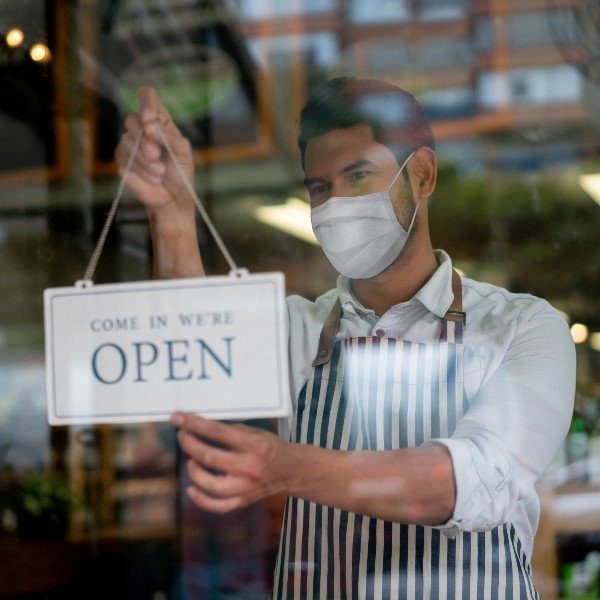Restaurants across the globe, and especially here in the Asia-Pacific region, are still “tightening their belts” and “holding their collective breaths” as COVID-19 continues to ravage the industry in unprecedented ways. Some countries in the region are now well into their second and third waves with no relief in sight, even as mass vaccination efforts have begun. Amid the countless lockdowns, restaurants’ revenue-generating options have mostly shifted focus to takeout and delivery, as they are faced with limited seating capacity or total restrictions on indoor dining. Such significant and sudden changes have forced many establishments into cost-savings mode as they try to stay in business.
But with revenue falling, and in most cases stalling, how does an establishment minimize costs to free up cash and extend the life of their business?
For restaurants that are staying open in some capacity, this guide offers helpful tips for controlling costs that can be put to use immediately, and hopefully assist them in making it through this tough period.
Damage / Risk Assessment

The initial step for any business is to assess its operating costs. This is the time to find out exactly what you are spending your money on. It will be difficult to hatch an effective survival plan without a clear understanding of your current P&L statement, which normally shows costs subtracted from sales and gives you a clear image of your establishment’s performance over time.
Now that you have a macro view of your financial status, it’s time to dive in deeper and identify specific factors that may be impacting your profits:
- Which dishes are “fast movers”?
- Which dishes are “underperformers”?
- What does your daily, weekly, and monthly revenue look like, and how is it trending?
Menu Renovation
Identify which dishes are your top performers and which ones will need to be shelved for the time being. This will come down to popularity, profitability, and accessibility of ingredients.
.jpg)
Menu Item Categorization:
- Rock Stars: extremely popular; high profitability
- Workhorses: popular; low profitability
- Bafflers: Not popular; high profitability
- Dogs: Not popular; low profitability
The rock stars and workhorses are your “must-haves”, needed to keep the traffic flowing into your establishment. These are the dishes that your customers crave.
Bafflers can remain on the menu because of their high profitability, but only so long as the accessibility or cost of their ingredients is not prohibitive.
Any menu items that fall into the dogs category can be shelved for the time being, because they’re just not doing anything to help your business.
By limiting your menu, you also reduce the preparation time and resources required for production.
Some establishments have also pivoted by creating a limited menu of items that are easier to prepare and retain product integrity during takeout and delivery. By creating a leaner menu that is optimized for takeout and delivery, you will be able to get your orders out the door faster and at a lower cost, making it easier for your customers to support you.
Inventory Control and Avoiding Spoilage

It’s been reported that up to 10% of the ingredients purchased by a restaurant is wasted before it reaches the customer. From a cost perspective that’s no small number, and proper inventory management can assist in minimizing food waste and profit loss.
In order to maximize profits on your current inventory of goods, it will be important to break them down into the following categories:
Sell immediately
These are the critical goods that can’t be frozen or stored long-term, meaning they need to be sold now or be discarded. Holding flash sales on certain dishes can help move them quicker. You can also try selling these goods as part of meal kits that your customers can make for themselves at home, or simply sell them individually.
Long-Term Storage
Anything that can be frozen or stored can stay as is. You’ll need these goods eventually, and so long as they won’t spoil, they’ll be able to generate revenue for you later.
Repurposed or Repackaged to Store/Sell
For goods that may spoil or may not sell quickly on their own, think about repurposing them into something new. For example, if you have a stockpile of fresh or dried herbs, try infusing them into olive oil to make flavored oils for future use or sale. Also consider other methods of preservation (e.g., pickling, curing) to increase the shelf life of certain goods.
Direct Online Ordering

There are a few different options out there, but adding your own online ordering system is much more cost-effective compared to relying on third-party apps like GrabFood and Foodpanda, which require fees.
You’ll also save on transaction fees. This fee is usually a percentage of each order made through the app. The fees differ depending on country and location, with metropolitan areas typically having higher fees that range from 10% to 30% – not a small chunk of change.
Adding your own direct online ordering system means you’ll have to take on the work associated with pickup and delivery, but keeping 100% of your profits is definitely worth the extra investment.
Business Hours Adjustment

Adjusting your business hours is admittedly not the most ideal option, because fewer hours of operation means decreased opportunities for revenue generation. However, limiting your hours to the busiest times of the day can help optimize output and costs.
For example, if you’re usually open for breakfast through lunch, but the majority of your business really comes from the breakfast crowd, consider remaining open only for the breakfast rush.
Or, if you’re usually open for most of the day, but know that lunch and dinner time is when your sales are highest, employ “broken time” and only remain open for those two busy periods.
By limiting your hours, you can save money on labor costs and focus your energy on providing the best customer experience at your peak times.
Team Restructuring
Unfortunately, desperate times call for desperate measures, and you may have no other choice but to downsize your team. Support your staff without putting your business in the red, and look to the future with just your core team, for now. Evaluate your entire team and identify the critical staff for continued operation.
It’s likely you’ll need to retain most of your back-of-house staff since they’ll be responsible for food preparation. From the front-of-house team, you may not need everyone right now – at least not in the roles you originally hired them for. For example, with your waitstaff, find out if they’d be able to take on different responsibilities instead.
As owners or managers, some of your employees may need to roll up their sleeves and take on more work to offset this loss of labor. This means taking on work that is typically outsourced to other team members – everything from deliveries to basic prep work.
Bank Loans/Credit Relief
Once your financial situation has been assessed based on your P&L statement and you have a clear picture of how much leeway your business has, the next step is to have an honest conversation with your bank/creditors to discuss options for relief. It is also important to discuss different strategies for cash flow optimization with your accountants.
For establishments that are funding their business through outstanding loans or a line of credit, now is the time to discuss and investigate relief eligibility. The most common forms of relief at the moment are deferments on principal or interest payments for an extended period and maintaining or increasing the limit on existing lines of credit.
The challenges presented by the COVID-19 pandemic are forcing restaurants to cut costs in any way possible just to survive. By employing the variety of cost-cutting measures discussed above, your establishment will be able to extend its life and reduce its burn rate.
If there’s one silver lining, it’s that you’re not alone. Governments are banding together with restaurant groups and associations to support each other and the industry through these difficult times.


Chef Jomi Gaston
Custom Culinary, Inc.